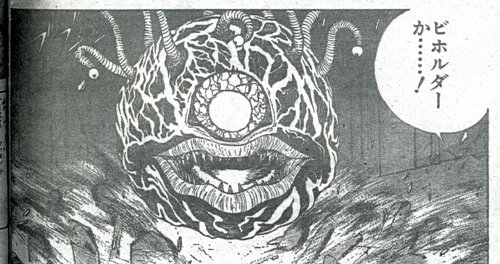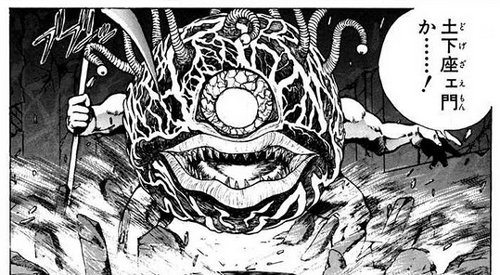Iosue
Legend
So if we go back to the primordial beginnings of TRPGs in Japan, if one looked around a local toy store or hobby shop in Tokyo, and that shop carried imported board games, one might have found an RPG box set or two. The box set would have been in English, so if you felt comfortable with English, you might buy it. And if you then opened it, read the contents, and figured out how to play, and were still interested, you might then try to gather a few people, explain the rules to them, and try to play. The only ones likely to try this were the university gaming clubs. These clubs would later form the backbone of the RPG community and market in Japan. But initially, there was no community, no TRPG market. Such forays into tabletop role-playing were one-offs, isolated examples. There was no infrastructure to bring these nascent role-players together.
Hitoshi Yasuda was at this time a freelance translator and critic of science fiction. By critic, I mean that he had a column or two in the domestic science fiction magazines where he would introduce newly translated science fiction and fantasy novels and short stories. By 1978, he made enough with his translations and writing to quit his day job at a large trading firm, and do it full-time. Naturally, he kept up with the foreign science fiction press as well. Starting in 1977, he started to see in these magazines advertisements for some strange looking games. Dungeons & Dragons. Runequest. Traveller. Intrigued by these, he ordered two of them in late 1979: Dungeons & Dragons (the Holmes Basic Set), and Traveller.
But when they finally arrived early in 1980, he didn’t “get” them. He opened the D&D box to find...two books and dice chits. This was obviously not the board game he expected. Trying to read through the rules did not provide much more help. While at Kyoto University, he’d started the Kyoto University SF Research Society, an informal club for reading and sharing science fiction. Although he had graduated in 1973, his juniors had continued the club, and it was still going on in 1980. Yasuda maintained contact with the group, and its members would occasionally come to his house to talk science fiction, or play some board or wargames. One night in April 1980, some members came to his house. They saw his Dungeons & Dragons box and asked about it.
“Hey, you guys read English, right?”
“Yeah?”
“Take a look at this. I’ll tell you what I think, and you guys tell me what you think.”
They worked through making up characters, and Yasuda tried to take them through the Keep on the Borderlands. It went predictably off the rails.
The party approached the Keep as evening fell. The module states that men-at-arms guarding the gate “shout at you to give your names and state your business.” One player quick drew his bow. “Who the hell are you?” Yasuda skimmed the module. As near as he could tell, fighting with the guards would bring more guards to the fray. Total Party Kill.
“Americans sure play strange games...”
Yasuda was ready to throw in the towel, but one of his juniors, Yohei Sawaki, who was especially good at English, asked to borrow the game so he and the others could discuss it more. By pouring through the rules, discussing them, and finding corroboration in English genre magazines, Yasuda, Sawaki, and the others cracked it in about 6 months, and started playing. They weren’t entirely sure they’d gotten it right, but what they were doing seemed fun. It wasn’t until Sawaki went to GenCon ’81 and got to play there that they finally had confirmation that they’d gotten it right.
For Yasuda, it was a revelation. Through the 70s, he was a known figure in science fiction fan circles, a noted writer, critic, and translator of science fiction. And then once 1980 hit, he seemingly abandoned science fiction to focus entirely on games. Specifically role-playing games.
Yasuda himself became the connective tissue for those isolated groups foraying into RPGs. Being rather well-known in science fiction circles afforded him connections among university and post-university groups and clubs of various interest (science fiction, gaming, writing, etc.) And he had a platform of sorts, and a rather considerable one considering this was the pre-internet early 1980s. He did panels at science fiction conventions. He had columns in genre magazines. His voice had some weight, and he began lending it to role-playing games. Not to mention GMing for many young men who would eventually lead the industry.
And in 1981, yet another vector appeared. One of his old compatriots from the Kyoto University SF Research Society plopped him in front of the Apple II, and said, “Is this that ‘RPG’ you keep talking about?” And what he saw was Ultima, just newly released. He was tapped by SF Adventure Magazine to write a column about playing it. As Yasuda described it, “I arrived at 3 PM, had some tea, they showed me the game, and I started to play. The next thing I knew, they were saying, “Mr. Yasuda, it’s time for dinner.” Four hours had passed. Yasuda made sure that when he wrote articles introducing these computer games, he first explained that they had come from pen-and-paper RPGs.
Science fiction and fantasy fans, boardgamers, and now computer gamers were now coming together to play RPGs. This was not a break into the mainstream. It was subculture among other subcultures. All the available materials were still in English. But it was becoming a community, and almost...a market. In late 1981, Hobby Japan, which made plastic models, toys, and board and war games, made a special agreement with Avalon Hill to start a new magazine devoted to war games, called Tactics. But role-playing games were becoming so well-known, that they devoted their May 1982 issue to RPGs. The hobby and game companies began to take notice. The time seemed right for a Japanese translations of these games. What was more, the time was ripe for Japan’s first domestic RPG.
Next: Part 2 - From Bloom to Boom
Hitoshi Yasuda was at this time a freelance translator and critic of science fiction. By critic, I mean that he had a column or two in the domestic science fiction magazines where he would introduce newly translated science fiction and fantasy novels and short stories. By 1978, he made enough with his translations and writing to quit his day job at a large trading firm, and do it full-time. Naturally, he kept up with the foreign science fiction press as well. Starting in 1977, he started to see in these magazines advertisements for some strange looking games. Dungeons & Dragons. Runequest. Traveller. Intrigued by these, he ordered two of them in late 1979: Dungeons & Dragons (the Holmes Basic Set), and Traveller.
But when they finally arrived early in 1980, he didn’t “get” them. He opened the D&D box to find...two books and dice chits. This was obviously not the board game he expected. Trying to read through the rules did not provide much more help. While at Kyoto University, he’d started the Kyoto University SF Research Society, an informal club for reading and sharing science fiction. Although he had graduated in 1973, his juniors had continued the club, and it was still going on in 1980. Yasuda maintained contact with the group, and its members would occasionally come to his house to talk science fiction, or play some board or wargames. One night in April 1980, some members came to his house. They saw his Dungeons & Dragons box and asked about it.
“Hey, you guys read English, right?”
“Yeah?”
“Take a look at this. I’ll tell you what I think, and you guys tell me what you think.”
They worked through making up characters, and Yasuda tried to take them through the Keep on the Borderlands. It went predictably off the rails.
The party approached the Keep as evening fell. The module states that men-at-arms guarding the gate “shout at you to give your names and state your business.” One player quick drew his bow. “Who the hell are you?” Yasuda skimmed the module. As near as he could tell, fighting with the guards would bring more guards to the fray. Total Party Kill.
“Americans sure play strange games...”
Yasuda was ready to throw in the towel, but one of his juniors, Yohei Sawaki, who was especially good at English, asked to borrow the game so he and the others could discuss it more. By pouring through the rules, discussing them, and finding corroboration in English genre magazines, Yasuda, Sawaki, and the others cracked it in about 6 months, and started playing. They weren’t entirely sure they’d gotten it right, but what they were doing seemed fun. It wasn’t until Sawaki went to GenCon ’81 and got to play there that they finally had confirmation that they’d gotten it right.
For Yasuda, it was a revelation. Through the 70s, he was a known figure in science fiction fan circles, a noted writer, critic, and translator of science fiction. And then once 1980 hit, he seemingly abandoned science fiction to focus entirely on games. Specifically role-playing games.
Yasuda himself became the connective tissue for those isolated groups foraying into RPGs. Being rather well-known in science fiction circles afforded him connections among university and post-university groups and clubs of various interest (science fiction, gaming, writing, etc.) And he had a platform of sorts, and a rather considerable one considering this was the pre-internet early 1980s. He did panels at science fiction conventions. He had columns in genre magazines. His voice had some weight, and he began lending it to role-playing games. Not to mention GMing for many young men who would eventually lead the industry.
And in 1981, yet another vector appeared. One of his old compatriots from the Kyoto University SF Research Society plopped him in front of the Apple II, and said, “Is this that ‘RPG’ you keep talking about?” And what he saw was Ultima, just newly released. He was tapped by SF Adventure Magazine to write a column about playing it. As Yasuda described it, “I arrived at 3 PM, had some tea, they showed me the game, and I started to play. The next thing I knew, they were saying, “Mr. Yasuda, it’s time for dinner.” Four hours had passed. Yasuda made sure that when he wrote articles introducing these computer games, he first explained that they had come from pen-and-paper RPGs.
Science fiction and fantasy fans, boardgamers, and now computer gamers were now coming together to play RPGs. This was not a break into the mainstream. It was subculture among other subcultures. All the available materials were still in English. But it was becoming a community, and almost...a market. In late 1981, Hobby Japan, which made plastic models, toys, and board and war games, made a special agreement with Avalon Hill to start a new magazine devoted to war games, called Tactics. But role-playing games were becoming so well-known, that they devoted their May 1982 issue to RPGs. The hobby and game companies began to take notice. The time seemed right for a Japanese translations of these games. What was more, the time was ripe for Japan’s first domestic RPG.
Next: Part 2 - From Bloom to Boom
Last edited:


